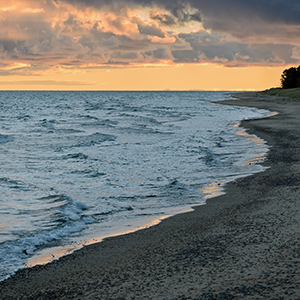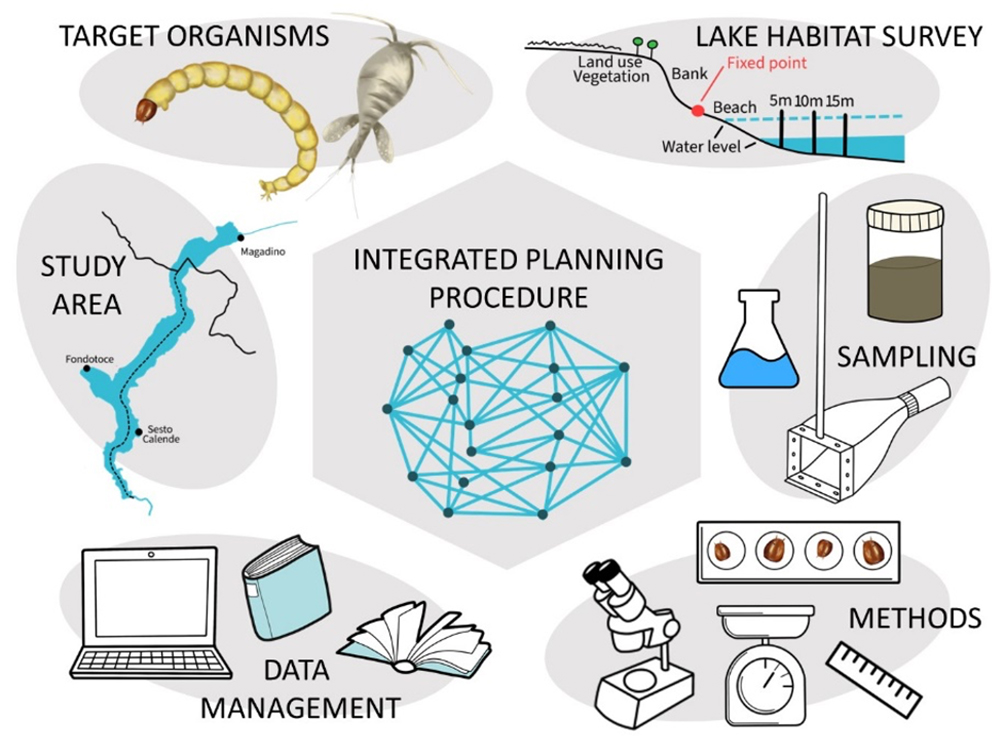Sampling and laboratory protocols to study the effects of water-level management on the littoral invertebrate fauna in deep and large temperate lakes

All claims expressed in this article are solely those of the authors and do not necessarily represent those of their affiliated organizations, or those of the publisher, the editors and the reviewers. Any product that may be evaluated in this article or claim that may be made by its manufacturer is not guaranteed or endorsed by the publisher.
Accepted: 10 August 2022
Authors
An integrated multidisciplinary protocol on monitoring, sampling, and laboratory procedures was developed and proposed as part of the Project "Parks Verbano Ticino" in the framework of the INTERREG V-A Italy-Switzerland 2014-2020 Cooperation Program. The project's overall goal is to evaluate the effects of water-level management (hydro-morphological stress) on both macro- and meio-fauna along the shores of Lake Maggiore, a large and deep temperate lake in northwest Italy. Because of their importance in the aquatic food web, determining how this stress affects macro- and meio-faunal assemblages is difficult. The protocol developed thus includes the evaluation of hydro-morphological impacts via the Lake Habitat Survey method, which entails monitoring of human-induced impacts and related infrastructures, followed by an in-depth evaluation of the ecological health of lake habitats via chemical analyses. The protocol then describes the sampling methods for shallow lake waters (i.e., <1.5 m depths) of deep lakes, but it also provides guidance on the best time to sample, how to select sampling sites, and how to allocate sample replicates along transects. A detailed step-by-step laboratory procedure for sample treatment was provided in order to assess the structure of macro- and meio-fauna assemblages, as well as morpho-functional traits (e.g., body shape and size, biomass estimate) in response to water-level management. For the first time, a set of morphological and functional characteristics of macro- and meio-faunal taxa are proposed for comparison. The protocol for standardized trait measurement is intended to be widely used. We also proposed chironomid species-specific length-mass regression models for biomass estimation, which is important for determining growth rate and secondary production of these taxa in temperate zone lakes. Length-mass equations could shed light on the role of specific species in the flow of energy through aquatic ecosystems. The proposed protocol was evaluated by team members to ensure common utility, accuracy, and repeatability of the procedures in order for researchers and stakeholders involved in water management of lakes with similar physical characteristics to use it. The protocol, which has been adapted or simply developed to meet the needs of the Italian context, could be successfully applied to other Alpine and Mediterranean temperate, deep lakes, reservoirs, and other glacial, volcanic, and morainic lakes, as well as to a broader European context.
Graphical Abstract
Ethics Approval
Silvia Quadroni, University of Insubria, ItalyHow to Cite

This work is licensed under a Creative Commons Attribution-NonCommercial 4.0 International License.






